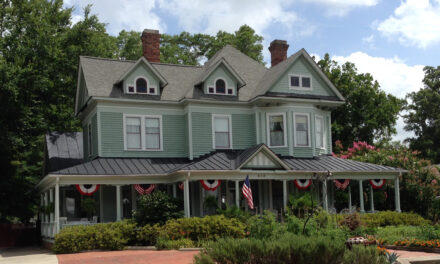A large audience of friends, relatives and other music lovers were on hand in Baldwin Auditorium on Duke University’s East Campus on December 5 for a delightfully unhackneyed program built around the theme “Lyrical Gestures.” The first half of the concert featured works directly related to either opera or singing. It ended with a symphony full of both folk elements and sounds alluding to nature. The Duke Symphony Orchestra consists mostly of students filled out with faculty and townspeople. The careful and expressive conductor was Harry Davidson.
The almost painfully private-sounding Prelude to Verdi’s opera Aïda opened with pp high violins, careful phrasing and mostly fine intonation. The music moved on to the violas and cellos and finally the woodwinds and brass joined. The quality of the exposed high notes played by the student string section was remarkable. The two lone double bass players worked hard to give as much heft as possible to compensate for their small numbers.
The second work on the program turned out to be both a treat and a revelation to me. I had heard only piano-accompanied versions of Richard Wagner’s “Wesendonk Lieder.” These consist of settings for five poems by Mathilde Wesendonk, the wife of a wealthy businessman who had taken in the composer who had proceeded to have an affair with his wife. The third song, “Im Treibhaus” (“In the Hothouse”), and the fifth, “Träume” (“Dreams”), were both designated as studies for the opera Tristan und Isolde . The first four songs were orchestrated by Wagner’s disciple Felix Mottl while the fifth was done by the composer himself. With a full orchestral accompaniment, the relationship to the opera is immediately clear. Vocal soloist Susan Dunn was magnificent. In the past, her soprano instrument has not always matched her artistic intent, but everything was in place for this performance. All her high notes came off perfectly, her voice was firm and well supported, and her dynamic range was fully expressive, as was her phrasing. Fine solos were given by Principal Cellist Maureen Hurtgen, Principal Violist Lauren Walters and Principal Oboe Eric Bramley. The horns were good or better most of the time. The prolonged applause for Dunn was richly deserved.
Antonin Dvorak’s too-seldom-programmed Symphony No. 6 in D, Op. 60, filled the second half of the concert. From the podium, conductor Davidson drew attention to the influence on this Dvorak work of Brahms’ Second Symphony (which Tonu Kalam had directed the previous night at UNC). By and large, the student orchestra played well–not perfectly but certainly with enthusiasm. The first movement began and ended well but nearly came apart with a raucous brass episode in the middle. The horn solo went well in the relaxed and flowing Adagio, with its beautiful low strings. The driving rhythm of the furiant, a peasant dance, dominated the scherzo, which was well played. From the hushed strings of its slow introduction, the last movement was largely successful.
Heard from the balcony, where the sound is often far better than on the main floor, this was an impressive concert that featured a lot of fine music-making. I look forward to more of conductor Davidson’s imaginative programming in the spring, when he will offer more operatic fare, including two complete performances of Don Giovanni, in concert form.












